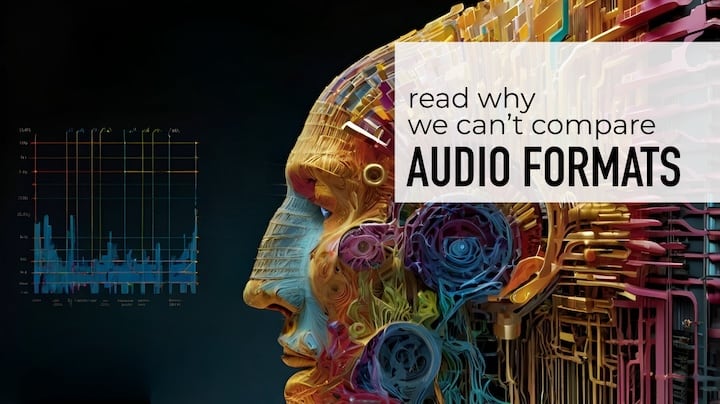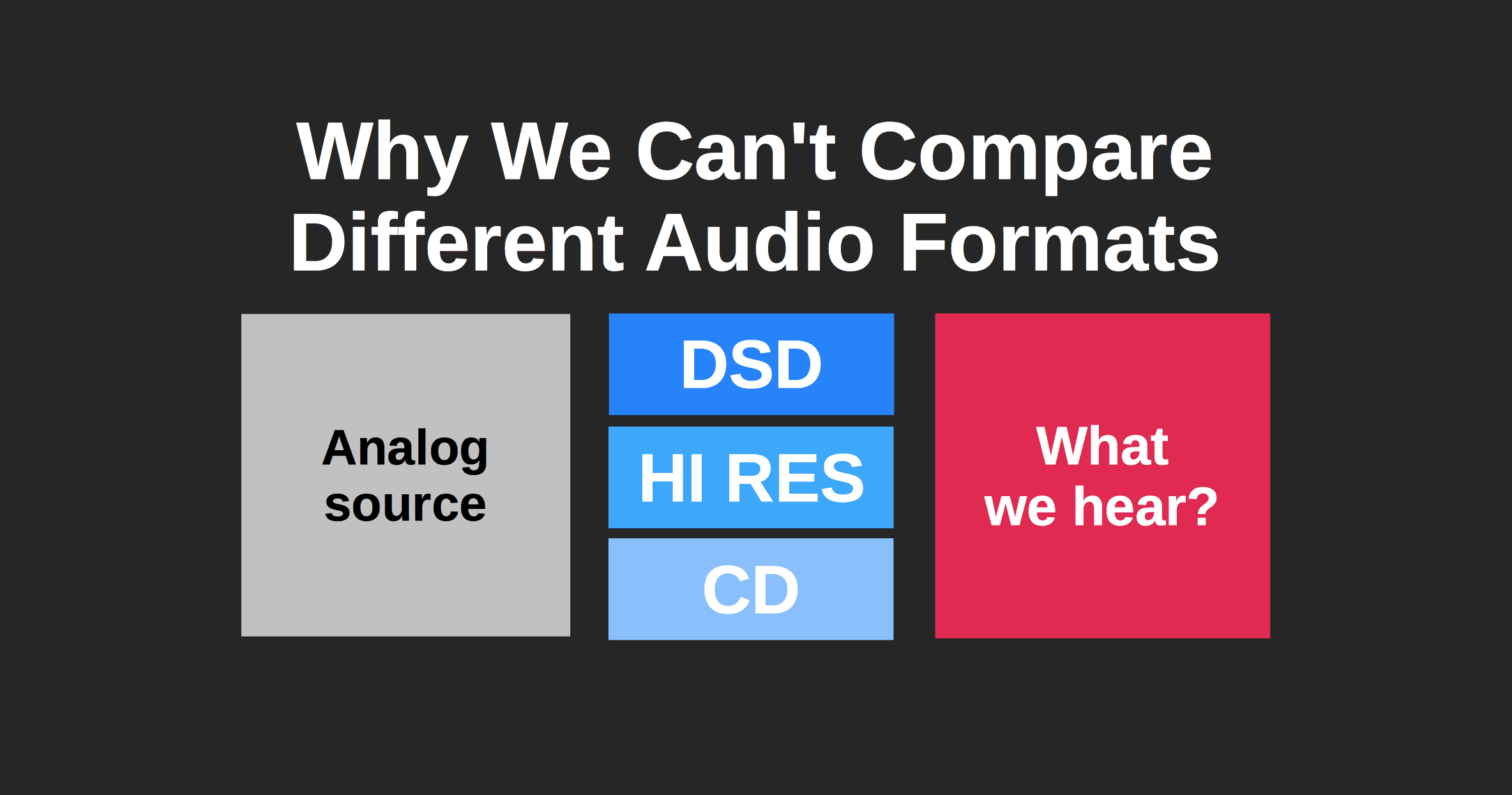
Audio Basis - articles about audio
Audio format comparison is inspired by an aspiration to find the best way to bring recorded music. Compared recordings are made from single analog source at best. In the worst case, compared sound files are converted from one format to another. Here the author wants to discuss why the comparison is the permanent "war".
In most cases, the comparison is performed via audition. Alternatively, and it's more correctly, in the author's opinion, it's recordings comparing via instrumental measurements. The difference between these ways is out of the article.
So, what do we compare actually?

If you buy "AuI ConverteR PROduce-RD" (2023/12.x version) from 24 August 2023 to 24 October 2023, you will get free update to version 2024 (13.x) after its release.
![video: How to improve sound quality [Your Guide]](/pictures/videopic/sd--nK1n7Im1VKY.jpg)
Back to top
Can we compare two audio files?
We can compare two audio files:
- as digital audio content;
- as binary audio content;
- by listening.
In the first case, we content is compared via spectral analizys and other instrumental ways.
In the second, case we can check identity of binary content only.
In the third case, we should provide the same listening conditions.
Back to top
DSD vs. PCM
What's really compared when we consider DSD versus PCM?

Actually, the formats here are only the middle parts of a full sound system. They are "a file in DSD" and "a file in PCM".
For this case, we try to compare only the middle parts. But the rest system parts define the result too: ADCs (analog-to-digital converter) and DACs (digital-to-analog converter), processing methods.
We compare two absolutely different systems. And result depends on the implementation of each set. We may get a better result for DSD system. And we may get better results for PCM one in another test.
Back to topHigh resolution vs. CD
Here we'll consider what really compared in CD vs. High Resolution comparison.

First, we don't know the actual format of ADC and music production project. Even a single ADC can sound differently in various modes. The mode here means combination of sample rate and bit depth combination.
Second, we don't know how the music production project was converted to 44/16. Or non-converted.
Third, our DAC can work in a different mode for high resolution and 44/16 input audio streams.
Here we again compare two various systems.

Back to top
Conclusions
Fully correct, from a techical point of view, comparison between different audio formats is impossible for cases considered above.
The format of audio file is only part of a system.
For these cases, we can compare only full systems that are placed between analog source and analog signal restored from digital data.
And we can compare the quality of the full systems, but not the audio formats as formats.
Back to top
Read more about HiFi tests
- Hearing Test vs. Measurements Audio. Where True? >
- 7 Keystones of Accurate HiFi Blind Test [Article] >
- Could a Music Be Used for Sound Quality Tests? [Article] >
Back to top
